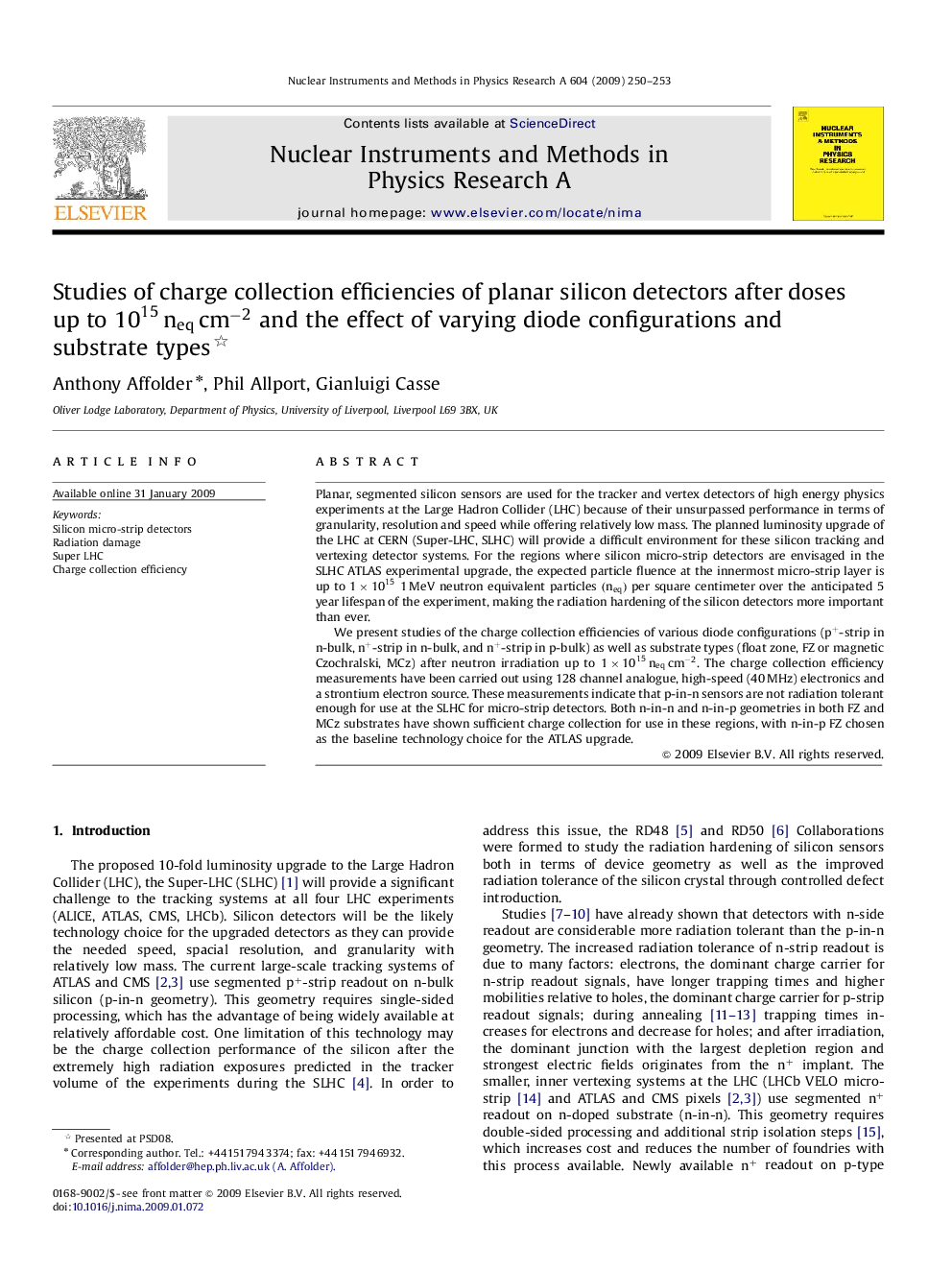| Article ID | Journal | Published Year | Pages | File Type |
|---|---|---|---|---|
| 1827864 | Nuclear Instruments and Methods in Physics Research Section A: Accelerators, Spectrometers, Detectors and Associated Equipment | 2009 | 4 Pages |
Planar, segmented silicon sensors are used for the tracker and vertex detectors of high energy physics experiments at the Large Hadron Collider (LHC) because of their unsurpassed performance in terms of granularity, resolution and speed while offering relatively low mass. The planned luminosity upgrade of the LHC at CERN (Super-LHC, SLHC) will provide a difficult environment for these silicon tracking and vertexing detector systems. For the regions where silicon micro-strip detectors are envisaged in the SLHC ATLAS experimental upgrade, the expected particle fluence at the innermost micro-strip layer is up to 1×10151×1015 1 MeV neutron equivalent particles (neq)(neq) per square centimeter over the anticipated 5 year lifespan of the experiment, making the radiation hardening of the silicon detectors more important than ever.We present studies of the charge collection efficiencies of various diode configurations (p+p+-strip in n-bulk, n+n+-strip in n-bulk, and n+n+-strip in p-bulk) as well as substrate types (float zone, FZ or magnetic Czochralski, MCz) after neutron irradiation up to 1×1015neqcm-2. The charge collection efficiency measurements have been carried out using 128 channel analogue, high-speed (40 MHz) electronics and a strontium electron source. These measurements indicate that p-in-n sensors are not radiation tolerant enough for use at the SLHC for micro-strip detectors. Both n-in-n and n-in-p geometries in both FZ and MCz substrates have shown sufficient charge collection for use in these regions, with n-in-p FZ chosen as the baseline technology choice for the ATLAS upgrade.
